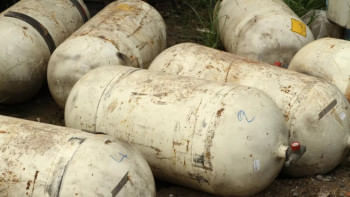Rotavirus vaccine in national immunisation - how far?

Early this year thousands of children got access to rotavirus vaccines in India with the start of a national introduction that marks Asia's largest to date. But over 90 million children around the world still lack access. Despite the fact that it can be prevented and treated, diarrhoea continues to take its devastating toll on children around the world. It is a leading cause of child death, and is responsible for hospitalising millions of children.
Rotavirus, the most common cause of severe, deadly diarrhoea, claims the lives of more than 200,000 children each year, and hospitalises hundreds of thousands more. This one virus is responsible for nearly 40 percent of all diarrhoea hospitalisations.
A recent multi-country study showed that children who developed moderate to severe diarrhoea had an eight-and-a-half times higher risk of dying in the subsequent two months compared to children who did not suffer from diarrhea. While improvements in hygiene, sanitation and drinking water are important to prevent diarrhoea in general, they cannot stop the spread of rotavirus. That is why preventing rotavirus infections is essential. And vaccination is the best tool available today to protect children from rotavirus.
These vaccines are improving health, reducing health care costs and saving lives today in countries where they are in use. The World Health Organisation (WHO) has recommended that every country introduce rotavirus vaccines into national immunisation programmes. So far, 80 countries have introduced the vaccines, but not enough countries in Asia or Africa have taken action — the regions where burden is highest.
Under the Comprehensive Multi-Year Plan of the National Immunisation Programme of Bangladesh 2011-2016, it had aimed for introduction of Rotavirus vaccine by the end of 2014 but it has not till date. Further, according to the hospital based surveillance study carried out in 2000 to 2006 in Bangladesh revealed 33% of all diarrhoea admissions among children less than 5 years were due to Rotavirus. 56% of the reported rotavirus positive cases were less than 1 year. Based on that they have estimated that population based incident rates of rotavirus ranged from 10.8 to 19.6/1000 children less than 5 years of age.
This study finding indicates that rotavirus is an important cause of childhood diarrhoea in rural Bangladesh and this burden may be reduced with a rotavirus vaccination programme. Also there are studies which suggest that Introducing rotavirus vaccines could prevent an estimated more than 1 lakh hospitalisations in Bangladesh.
Dr. Mathu Santhosham, ROTA Council Co-chair, United States; Professor, Departments of International Health and Paediatrics Director, Center for American Indian Health, Johns Hopkins University – through an exclusive interview – broke the complex issues to care-givers, government and people at large on this critical issue of rotavirus and what we all can do to save our children from the scourge of rotavirus.
Describing the magnitude of the disease particularly for children, Dr. Mathu emphasised that vaccine is the most effective preventive measure that can fight against rotavirus related diarrhoea.
Dr. Mathu hoped that Bangladesh would seriously consider applying for rotavirus vaccine since there is funding mechanism available through Global Alliance for Vaccine and Immunisation (GAVI). Interestingly Bangladesh has more data on rotavirus infection than any other surrounding regions, which they are in fact utilising to justify the introduction of the vaccine in their countries.


 For all latest news, follow The Daily Star's Google News channel.
For all latest news, follow The Daily Star's Google News channel. 



Comments